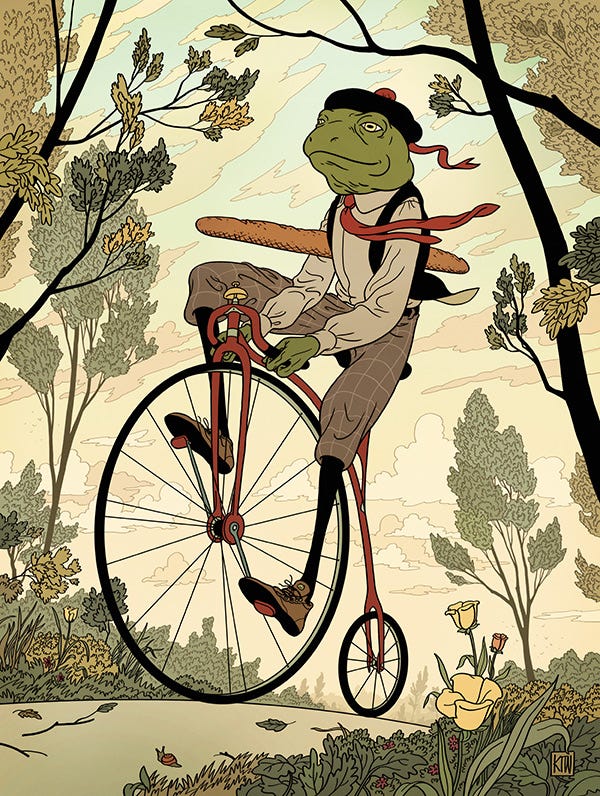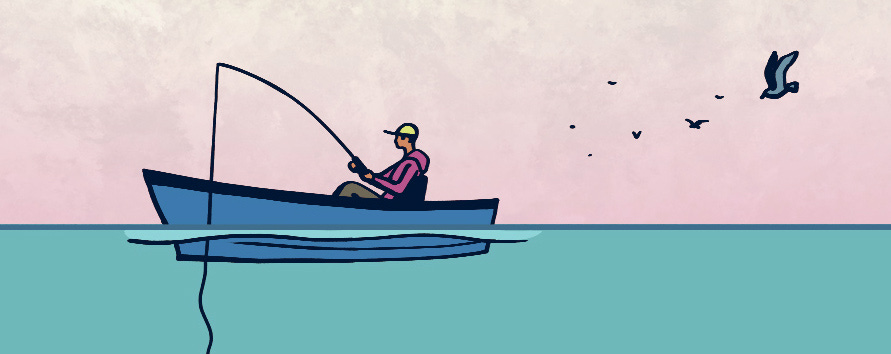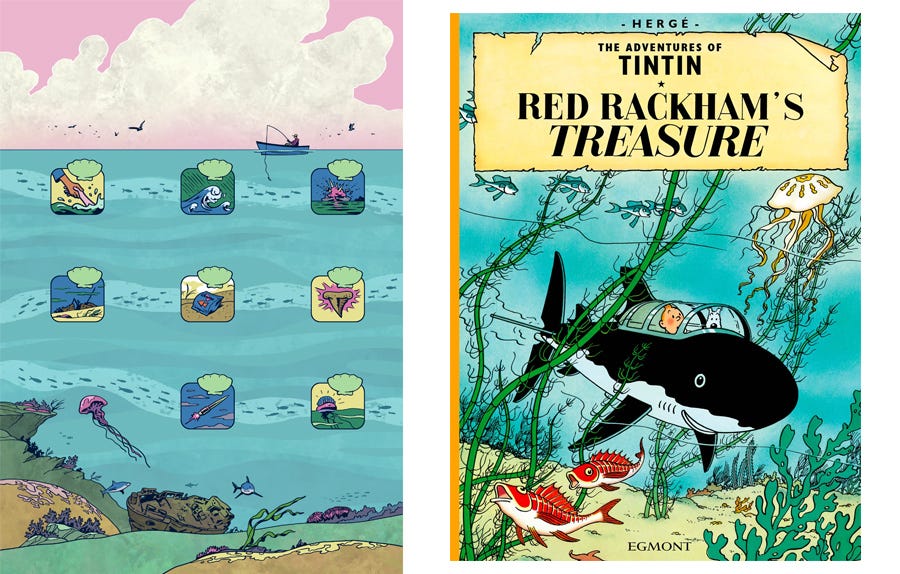Memory, Storage, Human, Machine.
Your work looks like YOUR work because you are alive. And that's why it matters. (And it's better than A.I.)
Scrolling through Instagram and seeing a certain color combination employed by an artist you admire can inspire you to give the same combo a try right away in your next drawing. Or maybe you see a poster downtown that makes clever use of a letterform and you decide to try a similar approach with a different letterform for a logo project in your studio.
These are examples of memory in action. It’s a relatively short-term thing and it’s how a lot of art gets made: elements of recent images that have caught your eye inspire you and make their way into your latest work. This is not to be confused with plagiarism, unless you’re simply copying another person’s concept and execution outright. (Don’t do that, please.)
Storage is different. It’s where you keep that deep, rich collection of life experiences and personally meaningful media you have consumed throughout the years. It can show up in different ways, from the dominant subject matter and tone of your work through to more technical things like style, color, composition, and so on.
The unique voice of an artist emerges from a mixture of numerous factors, but I believe it’s the storage that plays the strongest part in shaping the look and feel of one’s body of work in the long run.
I’m using computer terminology here to define these two ways our brains retain and access information; it’s a simple analogy, but it’s not perfect. The term, ‘storage,’ does not do justice to the complexity of the thing, but I am using this vocab for a reason. More on this later.
I draw a full-page illustration every month for Our State, a magazine I have worked with for a decade now (longer?). In the most recent piece, I had to create an underwater scene. Only after I had completed the art did I notice the role storage played in my work.
My underwater drawing felt strangely familiar to me, but I wasn’t sure why. Then, it hit me: Red Rackham’s Treasure. The cover of Hergé’s Tintin adventure, Red Rackham’s Treasure is something I have stared at hundreds of times throughout my life. Anybody who knows me well probably knows I am obsessed with all things Tintin. Even though this book’s cover art wasn’t something I intentionally studied (or have even seen in the past year), it IS something I have loved for decades. So, it makes sense that I would subconsciously channel some of its design in my drawing.
Cats show up in dozens of my illustrations, though they are almost never part of the story being told. I just love the look of them, and had a few nice ones growing up. My wife pointed out how often I drew cats and I hadn’t even noticed! And that’s kind of the point here. It’s not that I see cats all around me in my daily life and this prompts me to draw them soon after. Cats are just animals that make me happy, so they make their way into my drawings. That’s a storage thing.
Of course, there are tons of other decisions I make — many of them unconscious —when I’m drawing, and these decisions will differ from those of some other artist, because our lives are now, (and have always been) different.
This is why your work, no matter the subject matter, will always skew ‘you.’ Your memories are not mine, or anyone else’s. Your specific representation of the same objects, places, or people will be colored by your opinions, environment, politics, preferences, obsessions, heartbreaks, victories, and tragedies; all of this stuff bubbles up to the surface in your creations whether you want it to or not.
But also, there’s skill. Ability. “Talent.” Even physiology. We humans are imperfect and made of delicate stuff that grows, bends, breaks, stretches, twists, freezes up, deteriorates, weakens … this is part of the equation. The combination of memory, storage and physical limitations adds up to what makes an individual’s art one-of-a-kind.
And it’s the difference between what we, as humans, create and what a machine creates. We have lived through things, loved things, and lost things, and because of these experiences, we can’t help but create art that reflects who we are. It’s our lives, past, present and future — the storage — that gives every line we draw meaning.
Memory and storage influence what we make, but it’s more than just recall. It’s millions of tiny moments where we FELT something.
For a computer? A machine? They feel nothing because they’re dead from day one.
This is why human-made art is the only kind of art I care to see in the world. I am only interested in art that’s created by beings that feel.
If a hundred people prompt some GenAI engine to produce a frog riding a bicycle, the results will be almost identical on the first pass. But I produced the specific illustration below because I was the PERSON I had become up until, and on the day, I drew it.
And that, my friends, is the whole ballgame.

Thanks for reading. Share it, if you think a friend might like it. Thoughts? Please comment below.
As always, take care of yourselves, take care of each other, remember to be kind, and I’ll say, Ciao for now.
Kyle







Tintin FTW. Always and forever.
I think art is about the pursuit of truth. What is your truth that you are trying to share when you make a piece? There is no way to make connection with AI art because there is no feeling being pursued.
Thanks for the thoughts!